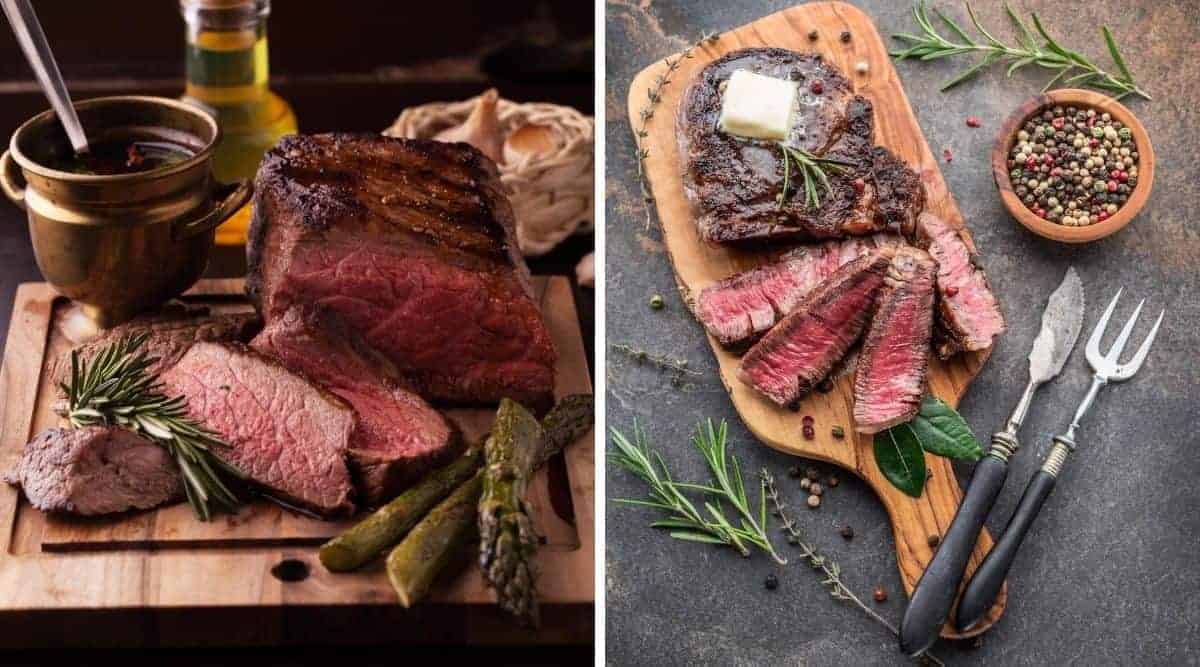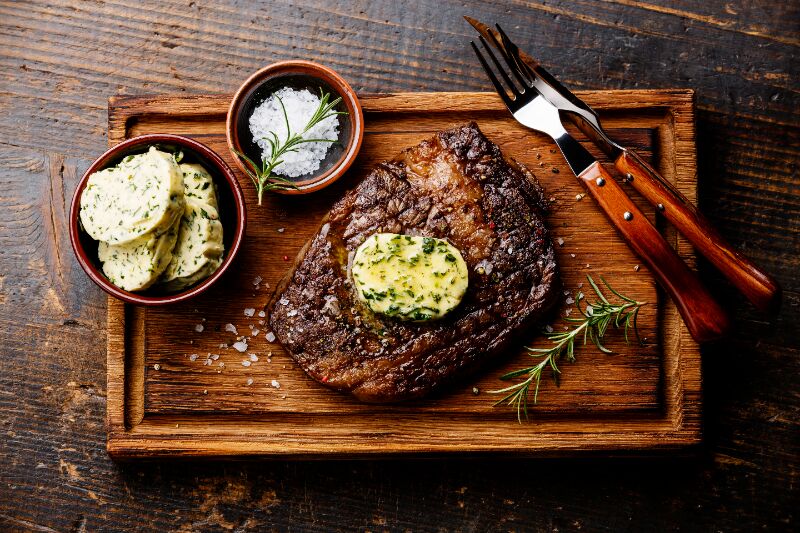Beef Tenderloin Overview

Beef Tenderloin, also known as fillet or filet mignon, is considered the most tender cut of beef. It is cut from the loin area of the cow, specifically from the muscles that do not bear much weight, resulting in its tenderness. The beef tenderloin has a delicate flavor with a slightly sweet and buttery taste. It is lean and has minimal marbling, which makes it a popular choice for those looking for a leaner option. This cut is best suited for cooking methods like grilling, roasting, or pan-searing to showcase its tenderness and delicate flavor.
Beef Tenderloin Characteristics And Flavor Profile
Beef Tenderloin, also known as fillet or filet mignon, is renowned for its exceptional tenderness. This cut comes from the loin area of the cow, where the muscles do not bear much weight. It has minimal marbling, making it a lean option for meat lovers. The flavor of Beef Tenderloin is delicate, with a slight sweetness and a buttery taste that melts in your mouth. Its tender texture and subtle taste make it a popular choice for those who prefer a milder beef flavor.
Beef Tenderloin Cooking Methods And Tips
Beef Tenderloin is a versatile cut that can be cooked using various methods to enhance its delicate flavor and tenderness. One popular method is grilling, which ensures a nice sear and juicy interior. Another option is pan-searing, which allows for a flavorful crust. For those who prefer a more tender texture, slow-roasting or braising can yield delicious results. It is important to remember to let the meat rest before slicing it to retain its juices. Seasoning the beef with a rub or marinade before cooking can also enhance the flavor.
Ribeye Overview

The ribeye is a highly popular and flavorful cut of beef that comes from the rib section of the cow. It is known for its marbling, which refers to the intramuscular fat that runs throughout the meat. This marbling gives the ribeye its distinctive rich and buttery flavor. The ribeye is often considered one of the most tender cuts of beef, making it a favorite among steak lovers. It can be cooked using various methods such as grilling, broiling, or pan-searing to further enhance its delicious taste and juicy texture.
Ribeye Marbling And Flavor Profile
Ribeye is renowned for its marbling, which refers to the streaks of fat running throughout the meat. This marbling gives the ribeye its rich and intense flavor. The intramuscular fat melts during cooking, resulting in a tender and juicy steak. The marbling enhances the taste and provides a buttery, melt-in-your-mouth experience. The fat also adds moisture and juiciness to the meat, making ribeye one of the most flavorful and succulent cuts of beef. Whether grilled, broiled, or pan-seared, the ribeye delivers an unforgettable and indulgent dining experience.
Ribeye Cooking Methods And Best Practices
When it comes to cooking methods for ribeye, grilling is often the preferred choice. The high heat of a grill helps to bring out the rich flavors and melt the marbling for a tender and juicy steak. For best results, preheat the grill to medium-high heat and sear the ribeye for a few minutes on each side. This will create a nice crust while maintaining a medium-rare or medium doneness. Resting the steak before serving is essential to allow the juices to redistribute and ensure maximum tenderness. Remember to season the ribeye with salt and pepper before grilling for optimal flavor.
Beef Tenderloin Vs Ribeye: Flavor And Texture

When it comes to flavor, Beef Tenderloin and Ribeye have distinct profiles. Beef Tenderloin is known for its mild and buttery taste. It has a subtle flavor that allows the natural meaty notes to shine through. On the other hand, Ribeye is packed with rich and bold flavors. The marbling in Ribeye adds a deep, intense beefy taste that is enhanced when cooked properly.
In terms of texture, Beef Tenderloin is incredibly tender and has a melt-in-your-mouth quality. It is a lean cut, so it lacks the fatty marbling that Ribeye offers. Ribeye, on the other hand, is known for its exceptional tenderness and juiciness. The marbling in Ribeye makes it more succulent and gives it a luxurious mouthfeel.
In summary, Beef Tenderloin has a mild and buttery flavor with a tender texture, while Ribeye has a rich and bold flavor with a juicy and tender texture. Both cuts offer unique experiences that cater to different preferences.
Comparison Of Beef Tenderloin And Ribeye Flavor
Beef Tenderloin and Ribeye have distinct flavor profiles. Beef Tenderloin is known for its mild and buttery taste, allowing the natural meaty notes to shine through. On the other hand, Ribeye has rich and bold flavors, thanks to the marbling that adds deep and intense beefy taste. The marbling in Ribeye enhances its flavor when cooked properly. While Beef Tenderloin has a subtle taste, Ribeye offers a more pronounced and robust flavor experience. Whether you prefer a milder or bolder flavor, both cuts provide unique and enjoyable dining experiences.
Texture Differences Between Beef Tenderloin And Ribeye
The texture of Beef Tenderloin and Ribeye differs significantly. Ribeye, with its generous marbling, offers a rich and luxurious mouthfeel. The marbled fat melts as you cook, resulting in a tender and succulent texture. Each bite is a combination of juicy meat and indulgent fat. On the other hand, Beef Tenderloin is known for its tenderness. It has a soft and delicate texture that practically melts in your mouth. Whether you prefer the rich and juicy texture of Ribeye or the melt-in-your-mouth tenderness of Beef Tenderloin, both cuts provide a delightful dining experience.
Nutritional Value And Health Benefits

Beef Tenderloin and Ribeye are both rich sources of essential nutrients. Beef Tenderloin is known for its lean and delicate composition, making it lower in fat and calories compared to Ribeye. It is also a good source of protein, iron, and B vitamins. Ribeye, on the other hand, has a higher fat content, which contributes to its rich flavor. While moderate consumption is recommended due to its higher calorie and fat content, both cuts provide important nutrients that support muscle function, contribute to energy production, and support overall health.
Nutritional Breakdown Of Beef Tenderloin
Beef Tenderloin offers a nutritious profile, making it a popular choice for health-conscious individuals. It is low in fat and calories compared to Ribeye, making it an excellent option for those watching their intake. A typical 3-ounce serving of Beef Tenderloin provides approximately 156 calories, 6 grams of fat, and 23 grams of protein. It also contains essential nutrients such as iron, zinc, and vitamin B12, which are vital for maintaining energy levels, supporting proper bodily functions, and promoting overall health. Include Beef Tenderloin in your diet to enjoy its nutrient-rich benefits.
Nutritional Comparison Of Ribeye And Beef Tenderloin
When comparing the nutritional profiles of Ribeye and Beef Tenderloin, there are some key differences to consider. Ribeye tends to have a higher fat content, which contributes to its rich flavor and juiciness. On the other hand, Beef Tenderloin is lower in fat, making it a leaner option. In terms of protein content, both cuts provide a substantial amount, with Beef Tenderloin offering slightly more. Additionally, Beef Tenderloin is a great source of essential nutrients like iron, zinc, and vitamin B12. Overall, while Ribeye is more indulgent, Beef Tenderloin offers a healthier option with its lower fat content and nutrient-rich profile.
Cooking Techniques: Beef Tenderloin Vs Ribeye

When it comes to cooking techniques, both Beef Tenderloin and Ribeye require different approaches to achieve the perfect steak.
For Beef Tenderloin, it is best to use dry heat methods such as grilling, roasting, or searing. These methods allow the tenderloin to develop a flavorful crust while keeping the inside juicy and tender. It is important to monitor the internal temperature closely to avoid overcooking.
On the other hand, Ribeye benefits from the marbling and fat content, making it ideal for grilling or pan-searing. The fat melts during cooking, adding flavor and moisture to the meat. It is important to sear the fat cap before cooking to enhance the taste and achieve a delicious crust.
Overall, both cuts can be cooked to perfection using different techniques, and personal preference plays a significant role in determining the cooking method.
Best Cooking Techniques For Beef Tenderloin
When it comes to cooking Beef Tenderloin, the best techniques to bring out its delicious flavors are grilling, roasting, or searing. These dry heat methods allow the tenderloin to develop a flavorful crust while keeping the inside juicy and tender. For grilling, preheat the grill to medium-high heat and sear the tenderloin on all sides before moving it to indirect heat to finish cooking. When roasting, preheat the oven to 425°F (218°C) and cook the tenderloin until it reaches your desired level of doneness. Searing the tenderloin in a hot skillet before transferring it to the oven is another great option. Regardless of the cooking method, be sure to use a meat thermometer to accurately monitor the internal temperature and avoid overcooking.
Recommended Cooking Methods For Ribeye
Ribeye steak is known for its marbling and rich flavor, making it a favorite among steak enthusiasts. The best cooking methods for Ribeye include grilling, broiling, and pan-searing. Grilling allows the steak to develop a delicious crust while maintaining its juiciness. Broiling is an excellent option for achieving a perfectly cooked steak under high heat, with the added benefit of a flavorful charred exterior. Pan-searing in a hot skillet with butter or oil gives the Ribeye a beautiful caramelized crust. Regardless of the method chosen, it is important to let the steak rest before serving to lock in the juices and tenderness.
Conclusion

In conclusion, the decision between Beef Tenderloin and Ribeye ultimately comes down to personal preference. Beef Tenderloin offers a delicate and lean texture, with a milder flavor profile that appeals to those seeking a more subtle taste. On the other hand, Ribeye is synonymous with rich marbling and bold flavors that are sure to please fans of a more robust steak. Both cuts can be prepared using various cooking methods, each offering a unique culinary experience. Consider your desired flavor, tenderness, and cooking techniques when selecting the perfect cut for your next steak dinner.
Final Thoughts On Choosing Between Beef Tenderloin And Ribeye
When it comes to selecting between Beef Tenderloin and Ribeye, it ultimately boils down to personal preference. Beef Tenderloin offers a delicate and lean texture, with a milder flavor profile that appeals to those seeking a more subtle taste. On the other hand, Ribeye is synonymous with rich marbling and bold flavors that are sure to please fans of a more robust steak. Both cuts can be prepared using various cooking methods, each offering a unique culinary experience. Consider your desired flavor, tenderness, and cooking techniques when selecting the perfect cut for your next steak dinner.
Key Factors To Consider When Selecting Steak Cuts
When selecting steak cuts, there are several key factors to consider. Firstly, consider the flavor profile you prefer. Beef Tenderloin offers a delicate and milder taste, while Ribeye boasts bold and rich flavors due to its marbling. Additionally, consider the texture you desire – Beef Tenderloin is known for its tenderness, while Ribeye has a more robust and chewy texture. It’s also important to consider cooking techniques – Beef Tenderloin is versatile and can be grilled, roasted, or pan-seared, while Ribeye is best when grilled or pan-seared to enhance its flavors. Finally, consider your own preferences and dietary needs when making your selection.
FAQ About Beef Tenderloin Vs Ribeye: Deciphering The Steak Showdown
Q: What is the main difference between Beef Tenderloin and Ribeye steak?
A: The main difference lies in the cut of the beef. Tenderloin comes from the loin area of the cow, whereas Ribeye is cut from the rib section.
Q: Which one is more tender, Beef Tenderloin, or Ribeye?
A: Beef Tenderloin is generally known for its tenderness due to its location on the cow’s body with less muscle movement. Ribeye is also tender but has more marbling which adds flavor.
Q: What about the flavor profile of Beef Tenderloin and Ribeye?
A: Beef Tenderloin is mild and has a subtle flavor, while Ribeye is rich and flavorful due to the higher fat content running through the meat.
Q: How should Beef Tenderloin and Ribeye be cooked?
A: Beef Tenderloin is best cooked quickly at high heat and is often served rare to medium-rare to maintain its tenderness. Ribeye can be cooked to various levels of doneness, from rare to well-done, allowing the fat to render and create a juicy steak.
Q: Which one is more expensive, Beef Tenderloin, or Ribeye?
A: Beef Tenderloin tends to be more expensive than Ribeye due to its tenderness and low fat content. Ribeye is more affordable and favored for its flavor and marbling.
Q: Can both Beef Tenderloin and Ribeye be used interchangeably in recipes?
A: While both are delicious cuts of beef, they have distinct textures and flavors. Beef Tenderloin is better suited for dishes where tenderness is key, while Ribeye shines in dishes where its rich flavor and marbling can enhance the dish.

Le Petit Cafe is more than just a coffee shop; it’s a cozy haven for coffee enthusiasts and food lovers. We are located at 26499 Jefferson Ave. Suite F, Murrieta, CA, in the heart of California, our café has been serving delightful coffee, delicious pastries, and savory meals since [year of establishment]. Our story begins with a passion for creating a warm, inviting space where friends, families, and colleagues can gather to savor life’s simple pleasures. The aroma of freshly brewed coffee and the sound of frothing milk greet our guests as they enter our welcoming atmosphere.